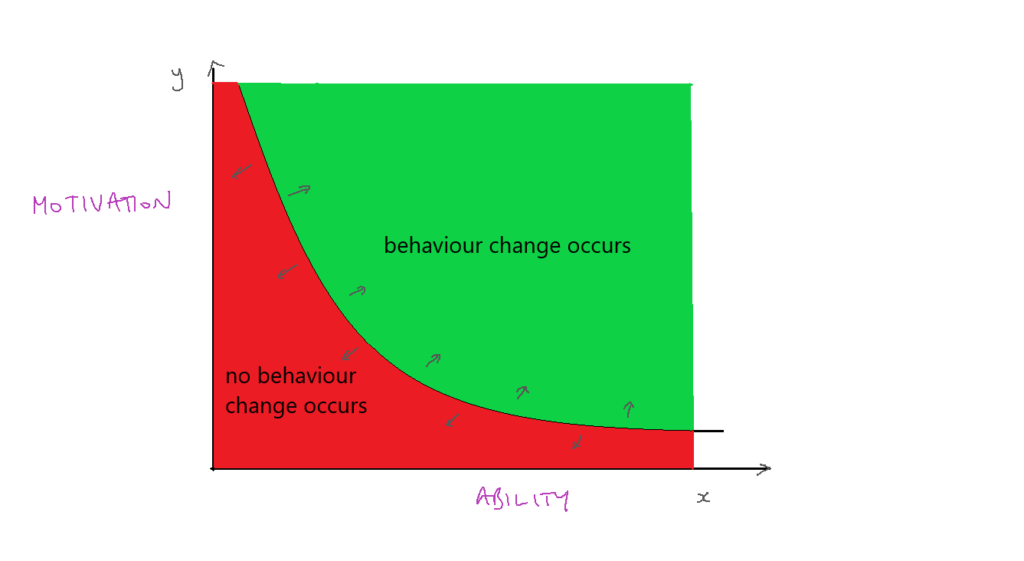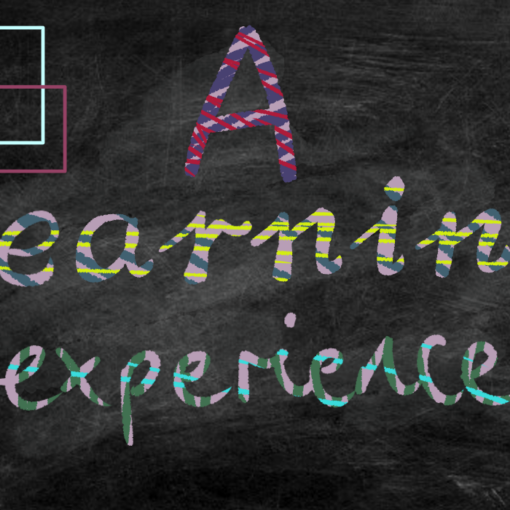In the last few months I have been working on behaviour change. Specifically, how to lose weight in a sustainable way. I have been loosely following the simple model given by BJ Fogg, outlined in more detail in his book, “Tiny Habits”. This involves motivation, ability and prompt (MAP) as the central triplet of factors to pay attention to in order to enable constructive behaviour change. Motivation and ability levels need to be high enough for the behaviour to be readily achievable, and a prompt must be in place on a regular basis to remind you to do the behaviour. I like his graph visualising the interaction between motivation and ability, and the simplicity of the model (it looks like a reciprocal graph of y = 1/x).

The minimum requirement for a behaviour to occur are modelled by the curve. High motivation is required for a behaviour for which you have low ability. Medium motivation for one for which you have medium ability. And low motivation for a behaviour for which you have high ability. Starting simply, it’s best to introduce tiny habits, which are easy to achieve and therefore require little motivation. Once these habits come more easily, progress and more constructive habits can be introduced. I started pragmatically by decreasing my carbohydrate portion sizes every meal. I cut out most of the alcohol I was consuming. The prompt came from an app on my phone reminding me to weigh in every morning (the “Weigh In” app), which became another tiny habit. As I saw the weight fall away, I replaced unhealthy snacks with fruit, veg, granola, yoghurt, pints of water, and the weight continued to fall off. An upgrade to a better hybrid bike, reward for my efforts and increased fitness from weekly bike ride outings with friends, incorporating a fair bit of Cotswold hill climbing, increased my motivation to get on the bike, and I replaced most car journeys with more cycling. I stopped eating anything after 8pm, even resisting the urge to join in with open-fire barbecues of meat in friends’ back gardens. I have started wearing a fitbit, paying attention to activity levels, heart rates, sleep patterns. So the tiny habit idea has certainly worked for me, and this despite many of my lazy tendencies.
It’s now two months after realising that I was so overweight that I was actually obese, and I have lost 11kg. I am well on my way to my target weight (of only being slightly overweight) by Christmas. That will require loss of another 8kg. When I get there, I will see how I feel, and may well choose to lose another 5kg in order to be in the “normal” range (for BMI – that’s a topic for another “applications of Maths” blogpost).
The learning point in terms of how I enable constructive behaviour change for students is to introduce tiny, achievable habits that are repeated over and over again. The snowball effect is what I am looking for – behaviour change leading to better learning, better skills and better test performance. But the model can be applied to any aspect of behaviour change; the simplicity of the MAP model and idea of introducing easily achievable tiny habits is key. On top of this, the physically healthier I am as a tutor, the better able I am mentally to engage with students as there are undoubtedly mental health benefits too!



